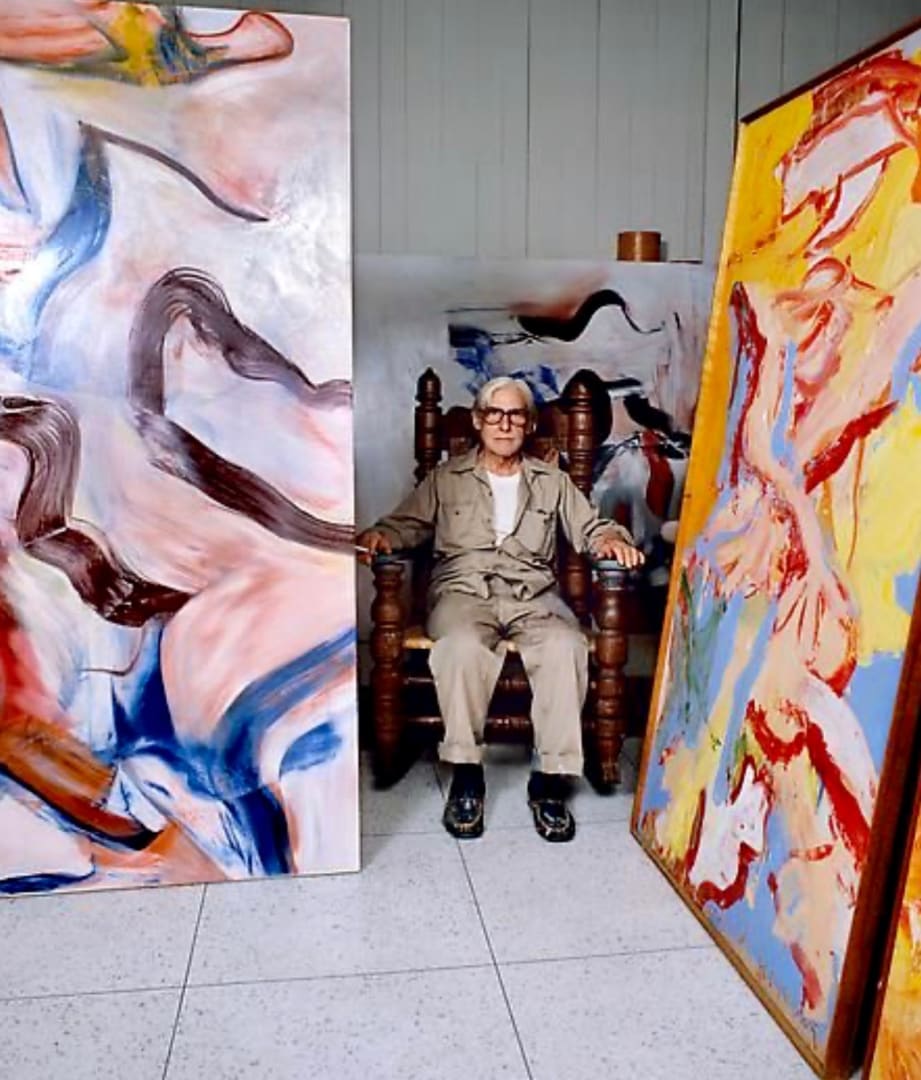Willem de Kooning (1904-1997) was a Dutch-American painter whose work played a central role in the development of Abstract Expressionism, making him one of the most influential artists of the 20th century. Born in Rotterdam, de Kooning trained at the Rotterdam Academy of Fine Arts and Techniques before immigrating to the United States in 1926, where he became part of the burgeoning New York art scene.
De Kooning is best known for his dynamic and gestural approach to painting, which combined elements of abstraction and figuration in ways that were groundbreaking at the time. His work is characterized by aggressive brushwork, bold color, and a raw, visceral energy that conveys a sense of spontaneity and emotional intensity. This is most evident in his series of Woman paintings from the early 1950s, which challenged traditional representations of the female form through their distorted, often unsettling depictions.
While de Kooning was closely associated with the Abstract Expressionist movement, his work was distinctive for its refusal to fully abandon figuration. He continuously oscillated between abstraction and representation, creating a tension that became a hallmark of his style. His ability to merge these elements into cohesive, powerful compositions significantly influenced the direction of post-war art.
De Kooning's impact on art history is immense; he helped redefine the possibilities of painting, opening up new avenues for expression. His work has been celebrated in major retrospectives and is held in prestigious collections worldwide, cementing his legacy as a towering figure in modern art.
